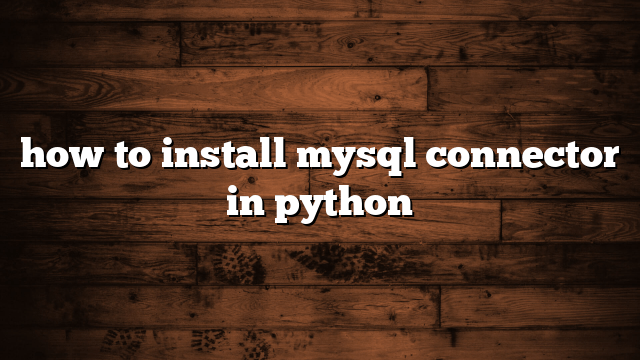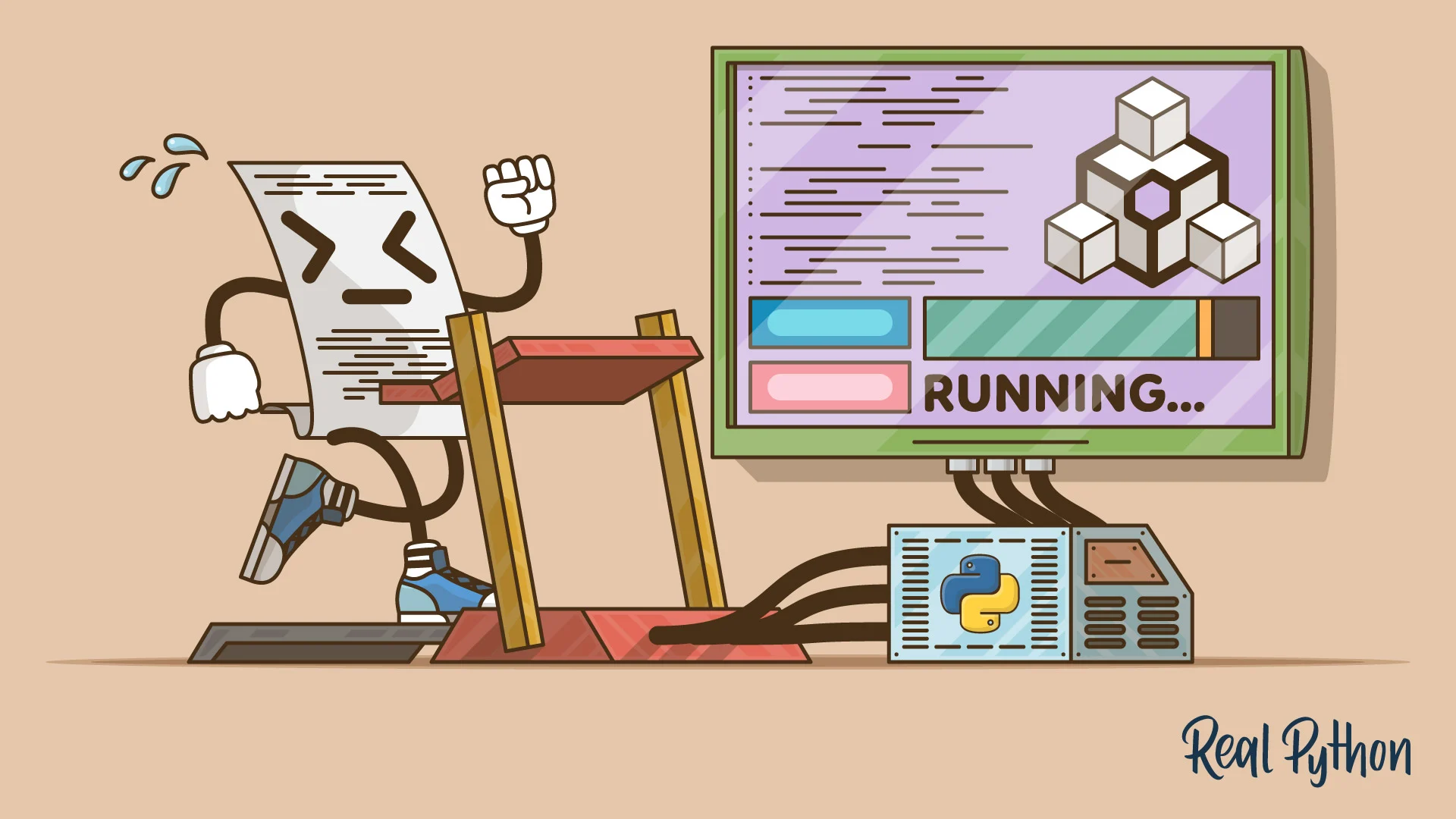This step-by-step guide provides a comprehensive overview of how to install mysql connector in python. It covers the essential information needed to install the connector and get it up and running quickly. This guide will provide detailed instructions on how to download, install, and configure the connector, as well as troubleshooting tips and other helpful information. Whether you are a beginner or an experienced user, this guide will help you get the most out of your MySQL Connector installation.
Overview of MySQL Connector and its Benefits
MySQL Connector is a database driver developed by Oracle that enables Python applications to access MySQL databases. It is an open-source, platform-independent, and lightweight driver that is written in C and C++. It provides a powerful, reliable, and secure connection to MySQL databases, allowing users to quickly and easily access data from their applications.
MySQL Connector is an essential tool for any Python application that needs to access a MySQL database. It provides a simple, easy-to-use interface that allows developers to quickly and easily connect to a MySQL database. It is also highly secure, with support for secure authentication and encryption.
MySQL Connector is also highly scalable, allowing applications to access large amounts of data quickly and efficiently. It supports a wide range of features, including stored procedures, transactions, prepared statements, and more. It also supports a variety of data types, including BLOBs, JSON, and XML.
MySQL Connector is also highly extensible, allowing developers to create custom connectors and extensions to access MySQL databases. It also supports a wide range of programming languages, including Python, Java, PHP, and more.
How to Install MySQL Connector in Python
Installing MySQL Connector in Python is easy and straightforward. The first step is to download the MySQL Connector package from the official website. Once the package is downloaded, you can install it using the pip command. After the installation is complete, you can then import the MySQL Connector module into your Python application.
MySQL Connector provides many benefits to Python developers. It is an easy-to-use, reliable, and secure way to access MySQL databases. It is also highly scalable and extensible, allowing developers to create custom connectors and extensions to access MySQL databases. Finally, it supports a wide range of programming languages, making it an ideal choice for any Python application that needs to access a MySQL database.
Steps to Install MySQL Connector in Python
How to Install MySQL Connector in Python
MySQL Connector is a library of APIs that allows you to connect to a MySQL database from a Python program. Installing the MySQL Connector library is a simple process that can be completed in just a few steps.
The first step is to download the MySQL Connector library. You can find the latest version of the library on the MySQL website. Once you have downloaded the library, you will need to extract the files from the archive.
The next step is to open a command prompt and navigate to the directory where you extracted the files. Once you are in the directory, you can use the “pip install” command to install the library. The command should look something like this: “pip install mysql-connector-python-2.1.3.tar.gz”.
Once the library is installed, you can use the “import mysql.connector” command to import the library into your Python program. This will allow you to use the library’s functions and classes to connect to a MySQL database.
Finally, you will need to configure the connection parameters. This includes the hostname, username, password, and database name. Once you have configured the connection parameters, you can use the “connect()” function to establish a connection to the database.
Once you have established a connection to the database, you can use the library’s functions and classes to query the database and retrieve data. You can also use the library to execute SQL statements and make changes to the database.
Installing the MySQL Connector library is a simple process that can be completed in just a few steps. Once the library is installed, you can use it to connect to a MySQL database and execute SQL statements.
Configuring MySQL Connector for Use in Python
How to Install MySQL Connector in Python
MySQL Connector is a powerful tool that allows you to connect your Python applications to a MySQL database. It is an open-source software that provides a fast and secure connection between the two systems. Installing MySQL Connector is a simple process that requires only a few steps.
The first step is to download the MySQL Connector package. You can do this from the official MySQL website. Once the package is downloaded, you will need to extract the files from the package. Once the files are extracted, you will need to install the connector on your system. This can be done using the command line or using the graphical user interface.
Once the connector is installed, you will need to configure it for use in Python. This can be done by editing the configuration file. The configuration file is located in the MySQL Connector directory. You will need to edit the file to specify the connection details, such as the database name, user name, and password.
Once the configuration file is edited, you will need to install the MySQL Connector Python package. This can be done using the pip command. Once the package is installed, you will need to import the package into your Python application. This can be done using the import statement.
Once the package is imported, you will need to create a connection object. This object will be used to connect to the MySQL database. The connection object can be created using the connect() method. Once the connection object is created, you will need to execute queries on the database. This can be done using the execute() method.
MySQL Connector is a powerful tool that allows you to connect your Python applications to a MySQL database. Installing and configuring the connector is a simple process that requires only a few steps. Once the connector is installed and configured, you can use it to execute queries on the database.
Common Troubleshooting Tips for MySQL Connector Installation
How to Install MySQL Connector in Python
MySQL Connector is a Python library that allows developers to connect to and interact with MySQL databases. It is a powerful tool for working with MySQL databases, and it is a great way to extend the functionality of your Python applications. However, installing MySQL Connector can be a bit tricky, so here are some common troubleshooting tips to help you get it up and running.
The first step is to make sure you have the correct version of Python installed. MySQL Connector is compatible with Python 3.6 and higher, so if you are using an older version, you will need to upgrade. Once you have the correct version of Python installed, you can download the MySQL Connector package from the official website.
Once you have downloaded the package, you will need to install it. To do this, open a terminal window and navigate to the directory where you downloaded the package. Then, type “python setup.py install” and press enter. This will install the MySQL Connector package on your system.
If you encounter any errors during the installation process, the most common cause is that you do not have the correct version of Python installed. Make sure you have the correct version of Python installed before attempting to install the MySQL Connector package.
Once you have installed the MySQL Connector package, you can start using it in your Python applications. To do this, you will need to import the package into your code. To do this, type “import mysql.connector” and press enter. This will import the MySQL Connector package into your code and allow you to start using it.
If you encounter any errors when trying to use the MySQL Connector package, the most common cause is that you have not imported the package correctly. Make sure you have imported the package correctly before attempting to use it in your code.
These are some common troubleshooting tips for installing and using the MySQL Connector package in Python. If you follow these tips, you should be able to get the package up and running without any issues.
Best Practices for Using MySQL Connector in Python
How to Install MySQL Connector in Python
MySQL Connector is a powerful tool for connecting to a MySQL database in Python. It provides a Python interface to the MySQL server, allowing developers to write Python code to interact with a MySQL database. With MySQL Connector, developers can easily create, update, and delete data from a MySQL database, as well as execute queries and stored procedures.
Using MySQL Connector in Python is easy and straightforward. The first step is to install the connector. This can be done using the pip package manager, which is included in most Python distributions. To install MySQL Connector, simply open a terminal window and type:
pip install mysql-connector-python
Once the connector is installed, you can use it to connect to a MySQL database. To do this, you will need to provide the hostname, username, and password of the MySQL server. Once the connection is established, you can start executing queries and stored procedures.
When using MySQL Connector in Python, it is important to follow best practices. First, always use parameterized queries when executing SQL statements. This will help protect against SQL injection attacks. Second, use the connection pooling feature of MySQL Connector to manage connections to the database. This will help reduce the number of open connections and improve performance. Finally, always use the latest version of MySQL Connector. This will ensure that your code is up to date and secure.
By following these best practices, you can ensure that your Python code is secure and efficient when using MySQL Connector. With the right setup, you can easily create, update, and delete data from a MySQL database, as well as execute queries and stored procedures.
In conclusion, installing MySQL Connector in Python is a simple process that requires a few steps. By following the steps outlined in this guide, you can easily install the MySQL Connector in Python and use it to access your MySQL databases. With the MySQL Connector, you can quickly and easily access and manage your MySQL databases from within Python.

















